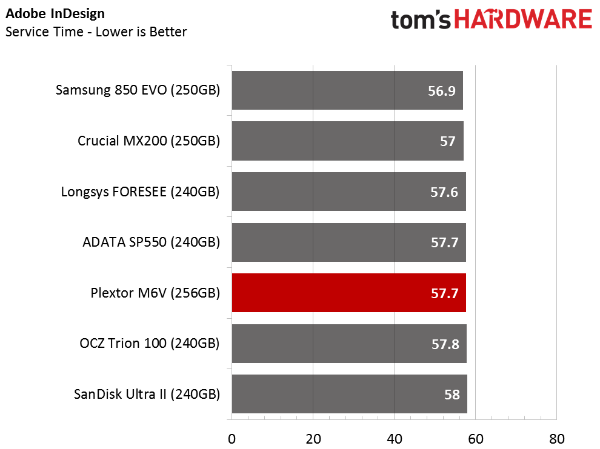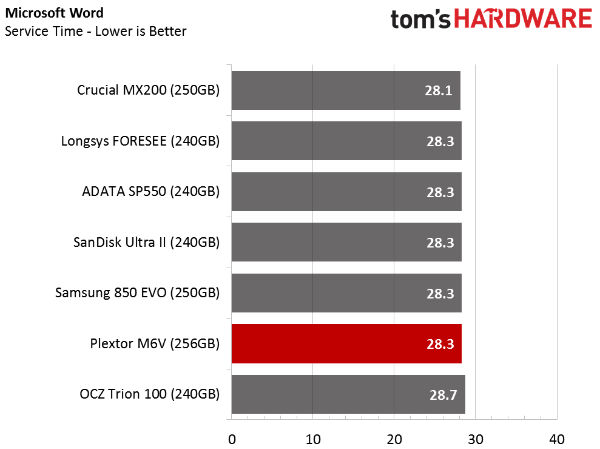Plextor M6V SSD Review
Value-oriented shoppers in the market for an SSD don't have to settle for TLC-based drives. Plextor found another way to reduce prices with two-bit-per-cell MLC: just use flash with smaller cells.
Why you can trust Tom's Hardware
Real-World Software Performance
PCMark 8 Real-World Software Performance
For details on our real-world software performance testing, please click here.










In many of our real-world software tests, Plextor's M6V finishes just behind the Crucial MX200 and Samsung 850 EVO. Some of the other drives sneak past the M6V at times, but Plextor's MLC-based SSD is never far behind.
Total Storage Bandwidth
After we average all of the results, Plextor's M6V settles in just under the 250GB MX200 250GB 850 EVO. However, the performance gap is wider for the top-tier drives than the lower-end contenders. In the real-world applications that most of us use every day, the M6V is only marginally better than TLC-equipped SSDs already on the market.
PCMark 8 Advanced Workload Performance
To learn how we test advanced workload performance, please click here.



Under heavy load with everyday software, Plextor's M6V shows the competition how it's done (though it still can't touch more premium SSDs like SanDisk's Extreme Pro). When we limit our scope to the low-cost models out there, the M6V delivers the best heavy-use performance.
Without an emulated SLC layer to sustain its momentum, the M6V trails several other SSDs when the workload eases, allowing them to recover. With so many solid-state drives available, you can see how it'd be easy to pinpoint a model able to address your specific use case.
Latency Test



It might seem logical to link throughput to latency, but that's not the case. While Plextor's M6V dominates the heavy-workload throughput tests, it, along with Samsung's 850 EVO, suffers through high latency. The variable not shown in these charts is drive busy time, which refers to how long it takes a task to complete.
Get Tom's Hardware's best news and in-depth reviews, straight to your inbox.
This metric combines latency (time to start) and throughput. It's possible to see very high throughput numbers and still take longer to start the requested task. Personally, waiting for an operation to start is as unnerving as waiting for it to complete.
Notebook Battery Life
For more information on how we test notebook battery life, click here.
The M6V is a good solid-state drive for mobile warriors who count on lots of battery life during long trips. It also delivers slightly better performance when the platform dials back bus speeds and clock rates. Some drives handle power-saving profiles better than others, and the M6V demonstrates one of the best scores we've seen.
Current page: Real-World Software Performance
Prev Page Mixed Workloads & Steady State Next Page Conclusion
Chris Ramseyer was a senior contributing editor for Tom's Hardware. He tested and reviewed consumer storage.

